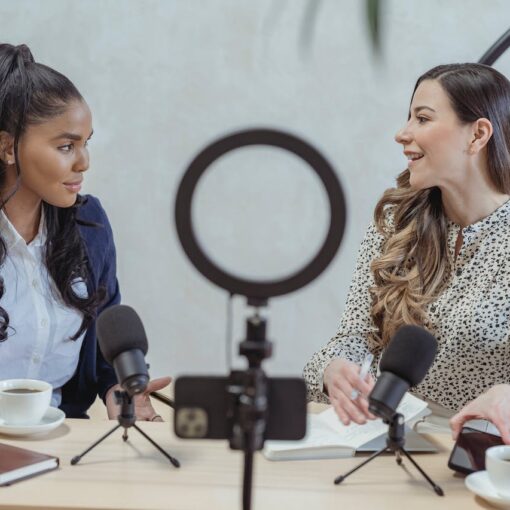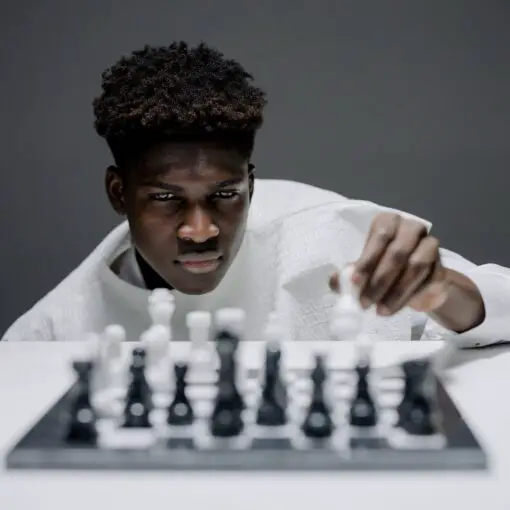In today’s complex world, critical thinking is a vital skill that anyone can benefit from. It helps individuals make informed decisions, solve problems effectively, and navigate various life situations with confidence.
Learning critical thinking skills can significantly improve both personal and professional life. Understanding which skills are essential for effective critical thinking is the first step towards becoming a more analytical and logical thinker.
1) Analyzing Arguments

Analyzing arguments is a critical thinking skill that helps you break down and understand arguments more deeply.
When analyzing arguments, identify the main claim or conclusion first. This is what the argument is trying to prove.
Next, look at the reasons or evidence supporting the claim. These support the conclusion and should be examined closely to see if they are strong and relevant.
It’s important to determine if the argument has any assumptions. Assumptions are things that are taken for granted without proof. Identifying these can help you judge the argument’s strength.
Watch for logical fallacies. These are errors in reasoning that weaken an argument. Common fallacies include ad hominem attacks and false dilemmas.
Evaluating the structure of the argument is crucial. Check if the reasons logically lead to the conclusion. A well-structured argument will have a clear flow from reasons to conclusion.
Analyzing arguments also means considering different perspectives. This helps in understanding the argument from all angles and identifying any biases.
Finally, always question the sources of evidence. Reliable sources strengthen the argument, while weak sources can undermine it.
2) Identifying Assumptions

Identifying assumptions is a key skill in critical thinking. Assumptions are often unspoken beliefs that influence decisions and perspectives.
Understanding assumptions helps in recognizing biases. Biases can hide in the background, affecting how information is interpreted and decisions are made.
By questioning assumptions, individuals can uncover these hidden influences. This leads to more informed and balanced decisions.
To identify assumptions, it’s important to ask questions and challenge initial thoughts. This involves looking beyond the surface of arguments and considering alternative points of view.
Recognizing assumptions also means being aware of one’s own beliefs. These personal beliefs can shape how information is processed and understood.
In critical thinking, evaluating the validity of assumptions is crucial. This involves checking the credibility of sources and the quality of information available.
Developing this skill helps in avoiding flawed reasoning. It builds a foundation for clearer and more objective decision-making.
By actively identifying assumptions, individuals can improve their critical thinking. This makes them better at analyzing situations and solving problems effectively.
For more information, you can explore guidelines on identifying assumptions at Critical Thinking Secrets.
3) Recognizing Biases
Recognizing biases is a crucial skill in critical thinking. Bias affects how people interpret information, leading to decisions not based on facts.
Biases can come from personal opinions, values, or preconceived notions. For example, confirmation bias makes individuals favor information that confirms their beliefs.
Cognitive biases, like anchoring bias, occur when people rely too heavily on the first piece of information they receive. This can skew their decisions.
Understanding biases helps in evaluating the credibility of sources. It allows people to identify and question assumptions and values that may influence decisions.
By learning about common biases, such as availability bias and hindsight bias, one can be more aware and mitigate their impact.
Recognizing biases improves problem-solving and decision-making by promoting objective analysis and evidence-based conclusions.
4) Evaluating Evidence
Evaluating evidence is crucial for effective critical thinking. It involves examining information, data, and sources to determine their reliability and relevance.
Critical thinkers question the credibility of each source. They consider the author’s expertise and the publication’s reputation. Reliable evidence often comes from peer-reviewed journals, established institutions, or credible experts.
Besides credibility, the context in which the evidence is presented matters. Think about the date of publication and the circumstances under which the evidence was gathered. Current and contextually accurate evidence is often more reliable.
Another key aspect is to check for biases. Identify if the source presents information objectively or if it favors a particular viewpoint. Recognizing bias helps critical thinkers avoid skewed interpretations.
Finally, compare multiple pieces of evidence on the topic. Diverse sources may provide different perspectives, helping to form a well-rounded understanding. This approach minimizes the risk of relying on a single, potentially flawed source.
For more in-depth strategies, refer to Evaluating Arguments and Evidence at the University of Galway.
5) Critical Reading
Critical reading is a fundamental skill for effective critical thinking. It requires more than just understanding the words on a page.
A critical reader actively engages with the text, questioning the arguments and evidence presented. They look for biases and assumptions.
Developing critical reading skills helps individuals analyze and interpret information more accurately. This involves identifying the main ideas and supporting details.
One must also check for the credibility of sources. Not all information is reliable or valid.
Critical reading often involves comparing texts on similar topics. This allows for a broader understanding and highlights differing viewpoints.
Practicing critical reading can also improve one’s ability to build strong arguments. By understanding the structure and techniques used in texts, one can better formulate their own positions.
Setting a clear purpose before reading is important. Whether one aims to gain a general understanding or critically analyze, having a goal helps focus their efforts.
Children’s cognitive development benefits from encouragement to think critically while reading, fostering a deeper engagement with the material.
Engaging in critical reading helps sharpen analytical skills, which are essential for decision-making in various aspects of life.
For more information on improving critical reading skills, check out this step-by-step guide.
6) Logical Reasoning
Logical reasoning is the process of using rational steps and sound judgment to arrive at a conclusion. It involves examining relationships between premises and conclusions to determine validity or truth. Logical reasoning is vital in critical thinking as it helps avoid errors and biases.
One aspect of logical reasoning is identifying logical fallacies. These are errors in reasoning that undermine the logic of an argument. Recognizing these fallacies is crucial for evaluating arguments effectively.
Additionally, logical reasoning requires distinguishing between deductive and inductive arguments. Deductive reasoning starts with a general statement and reaches a specific conclusion. In contrast, inductive reasoning begins with specific observations and forms a general conclusion.
Evaluating evidence is another key component. It involves assessing the quality and relevance of evidence before accepting or rejecting an argument. This step ensures that conclusions are based on strong, credible information.
Understanding logical connections between ideas is also important. This helps in identifying whether arguments are coherent and well-structured. It ensures that the reasoning process is clear and logical.
Lastly, logical reasoning often involves analytical skills. Analyzing situations and arguments rigorously leads to better decision-making. It’s a skill that improves with practice and continuous learning.
For more on the elements of critical thinking, including logical reasoning, check out the Forbes article on critical thinking.
7) Reflective Thinking
Reflective thinking is an essential skill in critical thinking. This involves stepping back to evaluate one’s own thoughts and decisions.
By practicing reflective thinking, individuals can understand their experiences better and develop new strategies. This process helps in embracing challenges and enhancing abilities.
Reflective thinking is crucial in both personal and professional settings. It aids in making informed decisions and improving performance. This type of thinking allows people to learn from their past actions.
One method to engage in reflective thinking is to imagine yourself looking into a mirror. Visualize your actions and consider their impact. This technique can unlock deeper understanding and insights.
Reflective thinking often involves assessing what worked and what didn’t in any given situation. By doing this, one can make necessary adjustments for future endeavors.
Educational systems emphasize reflective thinking to help students analyze and adapt their learning processes. This can lead to better outcomes in complex problem-solving situations.
Engaging in reflective thought also means being open to feedback. This helps in recognizing areas of improvement and fostering growth. Reflective thinking encourages people to be more mindful of their actions and thoughts.
For more on reflective thinking, you can explore Harvard Business Review.
8) Problem Solving
Problem solving is a key part of critical thinking. It involves identifying issues and then finding and evaluating possible solutions.
To start, a problem solver defines the issue clearly. This helps to focus on what needs to be fixed.
Next, they brainstorm potential solutions. All ideas are considered, even those that seem unlikely.
Evaluating these ideas is the next step. This involves looking at the pros and cons of each option.
Once the best solution is chosen, it’s implemented. The problem solver then monitors the results to ensure it’s effective.
Problem solving can be useful in many areas, especially in fields like project management and entrepreneurship.
Critical thinkers who excel in problem solving are often better at connecting ideas and making sound decisions.
They base their decisions on facts and evidence, ensuring an informed approach. This method brings clearer, more successful outcomes to challenges they face.
9) Effective Communication
Effective communication is crucial in critical thinking. It helps convey ideas clearly and understand others’ perspectives.
Active listening is a key part of communication. By paying full attention and not interrupting, one can grasp the real meaning of what’s being said. This enhances mutual understanding.
Non-verbal cues also play an important role. Body language, eye contact, and facial expressions can support or contradict spoken words.
Clear and concise language helps in expressing thoughts without confusion. Using simple words and straightforward sentences makes communication more effective.
Empathy improves communication by allowing individuals to relate to others’ feelings and viewpoints. This creates a more open and respectful dialogue.
Feedback is essential. Constructive criticism and active engagement in discussions help refine ideas and improve solutions.
Asking questions is another vital skill. It helps clarify points, gather more information, and encourage deeper thinking.
Written communication should be clear and well-structured. Email, reports, and notes must be easy to read and understand.
Effective communication leads to better problem-solving and decision-making. Through these skills, individuals can build stronger relationships and work more efficiently in teams. For more tips on improving communication skills, visit HelpGuide.
10) Inquisitive Mindset
An inquisitive mindset is key to effective critical thinking. People with this trait naturally ask questions about the world around them. They don’t accept information at face value. Instead, they seek to understand the reasons behind various ideas and events.
Being inquisitive means having a strong desire to know more. This drive pushes individuals to explore different perspectives and gather detailed information. This curiosity fosters deeper learning and better decision-making.
An inquisitive mindset encourages open-mindedness. It prompts individuals to consider alternative viewpoints and question their own assumptions. By doing so, they develop a more rounded and complete understanding of complex issues.
Constant questioning and exploration are at the heart of an inquisitive attitude. Individuals actively seek out new experiences and knowledge. This approach builds a solid foundation for robust critical thinking.
Curiosity also plays a crucial role in self-improvement. When people are genuinely interested in learning, they are more likely to engage in activities that enhance their skills. This commitment to growth is essential for becoming a proficient critical thinker.
To cultivate an inquisitive mindset, one should practice curiosity daily. Ask why things are the way they are and how they can be improved. Engaging regularly in this practice strengthens critical thinking abilities over time.
Inquisitiveness can be developed by being open to learning from various sources. This includes books, articles, conversations, and experiences. Being open to continuous learning can strongly enhance one’s ability to think critically.
For more insights on critical thinking skills, visit Mind Tools.
Understanding Critical Thinking
Critical thinking involves analyzing information, questioning assumptions, and making reasoned decisions. It is a crucial skill that impacts problem-solving and decision-making abilities.
Definition of Critical Thinking
Critical thinking is the disciplined process of actively evaluating information gathered from observation, experience, or communication. It requires questioning and carefully considering every step in the thinking process. This involves analyzing data, assessing evidence, and drawing reasoned conclusions.
Critical thinking is not just about intelligence. It’s about being able to apply logical reasoning and structured analysis to any situation. This means looking beyond surface-level information and understanding deeper implications. People who think critically can make well-informed decisions based on a thorough analysis of all available facts.
Importance in Everyday Life
Critical thinking plays a vital role in daily decision-making. For example, it helps individuals evaluate news sources and avoid misinformation. In the workplace, it allows for better problem-solving and innovative thinking. Employers often seek people who can approach tasks with a critical eye and provide unique solutions.
Outside of work, critical thinking helps in personal decision-making, like choosing the best course of action in financial planning or resolving conflicts. It helps people stay objective and avoid biases, leading to more balanced and fair judgments. Developing critical thinking skills thus significantly enhances both professional and personal life.
Analyzing Arguments
Effective critical thinking involves carefully examining arguments to understand their structure and strength. Focus on identifying premises and conclusions and evaluating the evidence presented.
Identifying Premises and Conclusions
When analyzing arguments, start by pinpointing the premises and conclusions. Premises are the statements or reasons that support the conclusion. They are the foundation upon which the argument is built. The conclusion is the main point the argument is trying to prove.
Understanding the links between premises and conclusions helps in assessing whether the argument is logical. Ask questions like, “Do the premises logically lead to the conclusion?” This will guide you in identifying any gaps or weaknesses.
Use tools like diagrams to visually separate premises from conclusions. This can make complex arguments easier to understand. For instance, a simple way to diagram an argument is:
| Premise 1 | Premise 2 | Conclusion |
|---|---|---|
| Statement | Statement | Main Point |
Key Points:
- Identify premises that provide support.
- Spot the conclusion that the argument proves.
- Check if premises logically connect to the conclusion.
Evaluating Evidence
Once premises and conclusions are identified, the next step is evaluating the evidence. Good arguments rely on strong, relevant evidence. This includes facts, statistics, expert opinions, and real-life examples.
Assess the reliability of the evidence. Check the credibility of the sources. For example, evidence from peer-reviewed journals or reputable institutions is typically more reliable than anecdotal evidence.
Ask critical questions:
- Is the evidence up-to-date?
- Does it directly support the premises?
- Is the source trustworthy?
Evaluate whether the evidence covers various perspectives. Good arguments consider different angles and address counterarguments. If the evidence is biased or incomplete, the argument’s strength diminishes.
Key Points:
- Analyze the quality and relevance of the evidence.
- Verify the credibility of the sources.
- Look for comprehensive coverage of different viewpoints.
Developing Objectivity
To develop objectivity, one must learn to overcome cognitive biases and practice open-mindedness. These key strategies help in making sound decisions based on facts rather than personal preferences or emotions.
Overcoming Cognitive Biases
Cognitive biases are mental shortcuts that can distort thinking. Common biases include confirmation bias, where a person favors information that confirms their beliefs, and anchoring, where people rely heavily on the first piece of information they encounter.
To overcome these biases, it is essential to be aware of their existence. Questioning initial assumptions and seeking out disconfirming evidence can help. Diverse perspectives are also crucial. Engaging with people who have different viewpoints challenges biases, enriching one’s understanding of an issue.
Another tactic is the use of structured decision-making tools. These tools, like decision matrices, help objectively evaluate all options. Keeping a healthy skepticism towards immediate impressions can also aid in minimizing biases, leading to more balanced and fair conclusions.
Practicing Open-Mindedness
Open-mindedness involves being receptive to new ideas and different perspectives. This skill is crucial for objective thinking as it reduces the influence of personal prejudices.
One way to practice open-mindedness is through active listening. This means not just hearing but understanding other viewpoints before forming a judgement. Exploring unfamiliar ideas and viewpoints through reading or discussions can also broaden perspectives.
Adjusting one’s mindset to be comfortable with uncertainty is also necessary. Accepting that one doesn’t have all the answers and being willing to change one’s mind based on new evidence encourages growth and learning. Reflection and mindfulness practices can further aid in recognizing and setting aside personal biases, fostering a more open and objective mindset.





